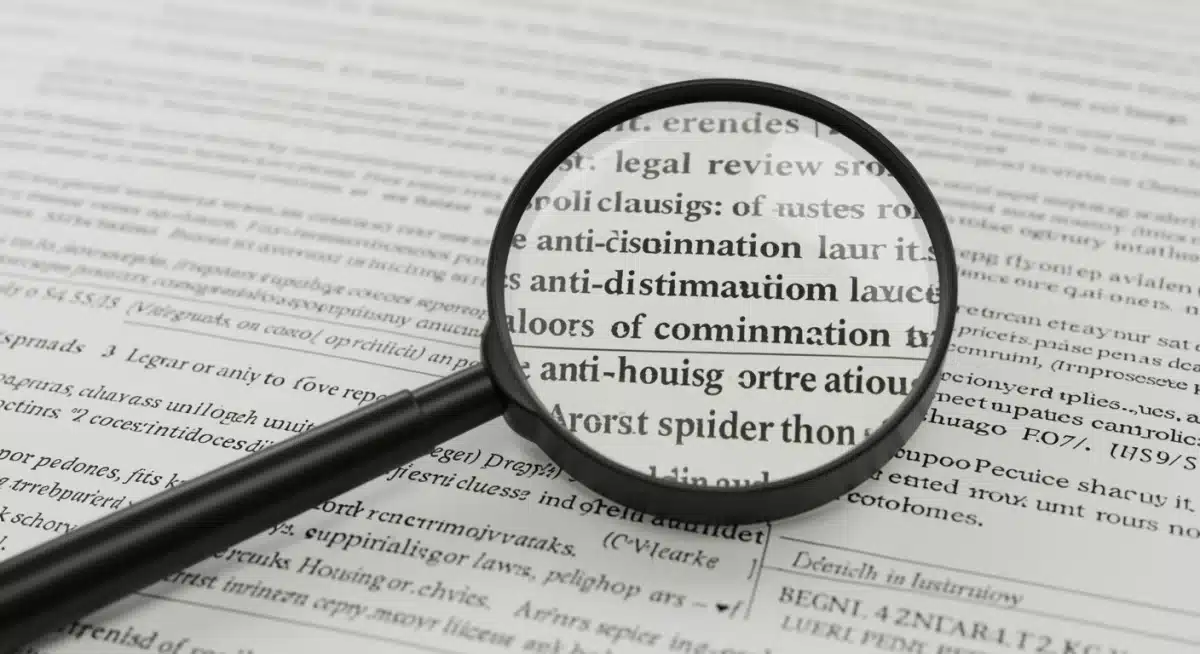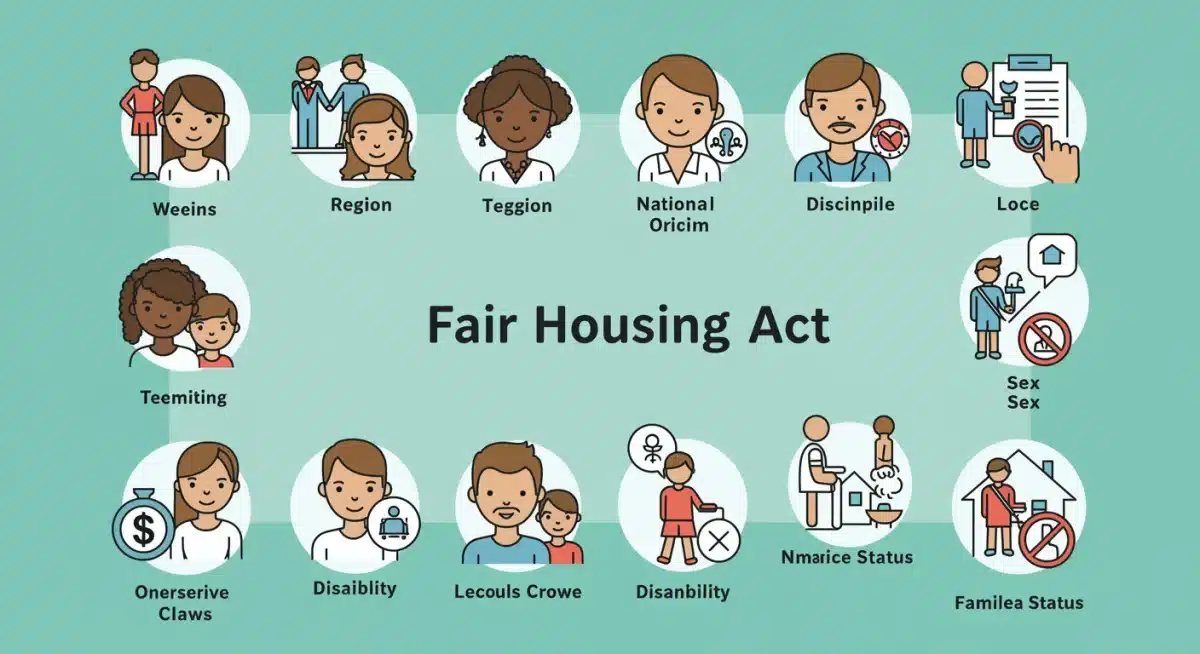Fair Housing Act Updates 2025: Equal Opportunity & Discrimination

Latest developments on Fair Housing Act Updates: Ensuring Equal Opportunity and Preventing Discrimination in 2025 with key facts, verified sources, and what readers need to monitor next in Estados Unidos, presented clearly in Inglês (Estados Unidos) (en-US).
Fair Housing Act Updates: Ensuring Equal Opportunity and Preventing Discrimination in 2025 is shaping today’s agenda with new details emerging from officials and industry sources. This update prioritizes what changed, why it matters, and what to watch next, in a clear news format.
Understanding the Core Mandate of the Fair Housing Act
The Fair Housing Act, enacted in 1968, stands as a landmark piece of legislation in the United States, prohibiting discrimination in the sale, rental, and financing of housing based on race, color, religion, sex, national origin, familial status, and disability. Its fundamental purpose is to ensure that all individuals have equal access to housing opportunities, free from prejudice. As we approach 2025, the principles remain steadfast, yet their application and enforcement continually evolve to address contemporary challenges and emerging forms of discrimination.
The Department of Housing and Urban Development (HUD) is the primary federal agency responsible for administering and enforcing the Fair Housing Act. HUD’s role involves investigating complaints, issuing regulations, and providing guidance to housing providers and the public. Understanding these foundational aspects is crucial for grasping the significance of any upcoming Fair Housing Act Updates.
Historical Context and Evolution
- 1968 Enactment: Passed in the wake of the Civil Rights Movement, initially addressing race, color, religion, and national origin.
- 1974 Amendment: Added sex (gender) as a protected characteristic, recognizing gender-based discrimination in housing.
- 1988 Amendment: Significantly expanded protections to include familial status (families with children under 18, and pregnant women) and disability, broadening the scope of the Act considerably.
These historical amendments illustrate a continuous effort to adapt the Act to societal changes and new understandings of equality. Each update has reinforced the commitment to eradicating discriminatory practices, laying the groundwork for future enhancements.
The core mandate of the Fair Housing Act is not merely a legal obligation but a societal imperative. It seeks to dismantle systemic barriers that have historically limited access to housing for certain groups, promoting integrated communities and fostering economic mobility. The ongoing discussions and potential Fair Housing Act Updates for 2025 are rooted in this enduring mission.
Anticipated Regulatory Changes and Their Impact
As 2025 approaches, various stakeholders are anticipating potential regulatory adjustments to the Fair Housing Act. These changes often stem from shifts in administration priorities, judicial interpretations, or evolving societal norms that reveal new forms of discrimination. Experts suggest that particular attention will be paid to areas such as artificial intelligence in housing decisions, source of income discrimination, and enhanced protections for LGBTQ+ individuals.
The impact of these regulatory shifts could be profound, affecting how landlords screen tenants, how lenders evaluate loan applications, and how real estate agents conduct their business. The goal is to refine the Act’s relevance and effectiveness in a rapidly changing housing landscape. According to recent statements from HUD officials, enhancing data collection and transparency will be a key focus.

Focus on AI and Algorithmic Bias
The increasing reliance on artificial intelligence and algorithmic tools in housing decisions, from tenant screening to mortgage lending, has raised concerns about potential biases. These systems, if not carefully designed and monitored, can inadvertently perpetuate or even amplify existing discrimination. Upcoming Fair Housing Act Updates may introduce clearer guidelines or prohibitions on discriminatory algorithms.
- Tenant Screening: Algorithms might inadvertently flag certain demographic groups due to historical data patterns.
- Advertising: Targeted digital ads can exclude protected classes from seeing housing opportunities.
- Lending: Automated underwriting systems could disproportionately deny loans to minority applicants.
Addressing algorithmic bias is critical to ensuring that technological advancements do not undermine the spirit of fair housing. HUD has indicated a proactive stance on this issue, suggesting that new regulations might require developers and users of AI in housing to demonstrate non-discriminatory outcomes.
Further regulatory changes could also encompass broader interpretations of existing protections. For instance, the definition of ‘sex’ discrimination has expanded in recent years to include sexual orientation and gender identity, a clarification that might be solidified through formal rule-making. These adjustments are vital for keeping the Fair Housing Act a robust tool against discrimination in all its modern manifestations.
Strengthening Enforcement Mechanisms
Effective legislation requires robust enforcement. For 2025, discussions around Fair Housing Act Updates include strengthening the mechanisms through which the Act is enforced. This could involve increased funding for HUD and other fair housing organizations, enhanced investigative powers, and more stringent penalties for violations. The aim is to deter discriminatory practices and ensure swift redress for victims.
The current enforcement framework relies on a combination of federal agencies, state and local fair housing organizations, and private litigation. While this multi-pronged approach has been effective, there are always opportunities to improve efficiency, reach, and impact. According to a recent HUD report, a significant portion of fair housing complaints still face lengthy investigation periods.
Increased Collaboration and Outreach
- Federal-State Partnerships: Fostering stronger ties between federal and state agencies to share resources and expertise.
- Community Engagement: Expanding outreach programs to educate both housing providers and consumers about their rights and responsibilities.
- Data Sharing: Improving the collection and sharing of data on discriminatory practices to identify systemic issues more effectively.
These collaborative efforts are essential to creating a more responsive and proactive enforcement system. By working together, various entities can identify patterns of discrimination, launch targeted investigations, and implement preventative measures before widespread harm occurs.
Moreover, there’s a push for greater transparency in enforcement actions. Publicizing successful fair housing cases and the penalties imposed can serve as a powerful deterrent. The proposed Fair Housing Act Updates aim to ensure that the consequences of discrimination are not only financially significant but also publicly known, reinforcing the importance of compliance.
Emerging Challenges and Future Protections
The landscape of housing discrimination is constantly evolving, presenting new challenges that necessitate adaptive legal responses. Beyond the traditional forms of discrimination, issues such as source of income discrimination, disparate impact, and the impact of climate change on housing access are gaining prominence. Future Fair Housing Act Updates are likely to address these emerging concerns, ensuring the Act remains relevant and comprehensive.
Source of income discrimination, for example, refers to the practice of landlords refusing to rent to prospective tenants solely because of their lawful source of income, such as housing vouchers or disability benefits. While some states and localities have enacted protections, a federal mandate would provide universal coverage. This issue is particularly critical given the ongoing affordable housing crisis.

Climate Change and Housing Equity
An increasingly recognized challenge is the intersection of climate change and housing equity. Vulnerable communities, often comprising protected classes, are disproportionately affected by climate-related disasters and the resulting displacement. Ensuring fair access to resilient housing and disaster relief becomes a fair housing issue. While not directly covered by the current Act, future interpretations or amendments could link these concerns.
- Disaster Relief: Ensuring equitable distribution of housing assistance after natural disasters.
- Resilient Housing: Promoting fair access to housing built to withstand climate impacts.
- Environmental Justice: Addressing the disproportionate siting of environmental hazards near minority communities, which impacts housing quality and value.
These complex issues highlight the need for a dynamic approach to fair housing. As society grapples with new challenges, the Act must expand its scope to protect those most at risk. The ongoing dialogue about Fair Housing Act Updates reflects a commitment to anticipating and addressing these future protections.
Role of Technology in Fair Housing Enforcement
Technology is not only a source of potential new forms of discrimination but also a powerful tool for fair housing enforcement. Advanced data analytics, artificial intelligence, and digital platforms are being leveraged to identify discriminatory patterns, streamline complaint processes, and educate the public. The integration of technology into enforcement efforts is a critical aspect of modernizing the Fair Housing Act’s reach and effectiveness.
Fair housing organizations are increasingly using data science to conduct systemic investigations. By analyzing large datasets of housing advertisements, rental applications, and loan approvals, they can uncover subtle biases that might otherwise go undetected. This proactive approach allows for more targeted interventions and policy recommendations.
Digital Tools for Compliance and Education
- Online Complaint Portals: Making it easier for individuals to file discrimination complaints and track their progress.
- AI-Powered Monitoring: Using AI to scan housing advertisements for discriminatory language or exclusionary targeting.
- Educational Platforms: Developing interactive online resources to inform both housing providers and consumers about fair housing laws and best practices.
The strategic use of technology can significantly enhance the capacity of fair housing advocates and regulators. It allows for a broader reach in monitoring the housing market and a more efficient response to violations. The upcoming Fair Housing Act Updates are expected to encourage and perhaps mandate the adoption of such technological tools within the industry.
However, the ethical implications of using technology must always be considered. Safeguards must be in place to prevent misuse of data and ensure that technological tools themselves do not introduce new biases. The aim is to harness technology’s power to serve justice, not to complicate it.
Consumer Protection and Awareness in 2025
For consumers, understanding their rights under the Fair Housing Act is paramount. In 2025, efforts to enhance consumer protection and awareness are expected to intensify, particularly concerning the latest Fair Housing Act Updates. This involves clearer communication from federal agencies, accessible educational resources, and robust support for individuals who believe they have experienced discrimination.
Many individuals remain unaware of the full scope of their fair housing rights or how to report violations. Bridging this knowledge gap is a key objective for advocates and policymakers. Simplified guides, multilingual resources, and community workshops are vital tools in this endeavor. According to consumer advocacy groups, a significant barrier to reporting discrimination is a lack of understanding about the complaint process.
Key Areas for Consumer Awareness
- Recognizing Discrimination: Educating consumers on what constitutes illegal discrimination in housing.
- Reporting Procedures: Providing clear, step-by-step instructions on how to file a complaint with HUD or local fair housing organizations.
- Protected Characteristics: Ensuring individuals know all protected classes under federal law and any additional state/local protections.
Empowering consumers with knowledge is the first line of defense against discrimination. When individuals are aware of their rights and the avenues for redress, they are more likely to challenge discriminatory practices, contributing to a fairer housing market for everyone. The proactive dissemination of information regarding Fair Housing Act Updates will be a crucial component of this strategy.
Furthermore, consumer protection extends to ensuring that housing providers are also well-informed and compliant. By fostering a culture of awareness and accountability across the entire housing ecosystem, the goal is to prevent discrimination before it occurs, rather than solely reacting to it. This holistic approach benefits both consumers seeking fair housing and providers committed to ethical practices.
Key Aspect |
Brief Description |
|---|---|
AI Bias Prevention |
New guidelines expected to address discriminatory outcomes from AI in housing decisions. |
Expanded Protections |
Clarification and formalization of protections for LGBTQ+ individuals and source of income. |
Enforcement Enhancements |
Increased funding, investigative powers, and penalties to deter discrimination. |
Consumer Awareness |
Focus on educating the public on rights and reporting mechanisms for housing discrimination. |
Frequently Asked Questions About Fair Housing Act Updates
Key changes anticipated for 2025 include updated guidance on artificial intelligence in housing decisions, potential federal protections against source of income discrimination, and further clarity on protections for LGBTQ+ individuals. These updates aim to modernize the Act’s application in contemporary housing practices and address emerging forms of bias.
New regulations are expected to introduce clearer guidelines or prohibitions to prevent algorithmic bias in housing. This means tools used for tenant screening, advertising, and lending will likely face stricter scrutiny to ensure they do not inadvertently discriminate against protected classes, promoting equitable outcomes in automated processes.
Source of income discrimination occurs when landlords refuse to rent based on a tenant’s lawful income source, such as housing vouchers. While currently protected in some jurisdictions, federal updates could provide nationwide protection, making it illegal to deny housing to individuals solely due to their legitimate income sources, enhancing housing access for vulnerable groups.
Consumers can stay informed by regularly checking the HUD website, consulting local fair housing organizations, and attending community workshops. These resources provide updated information on rights, complaint procedures, and new regulatory changes. Proactive engagement ensures individuals can recognize and address potential discrimination effectively.
HUD is central to enforcing the Fair Housing Act Updates. They are responsible for investigating complaints, issuing new regulations, and providing guidance. With anticipated enhancements in enforcement mechanisms, HUD’s role will likely expand, focusing on increased collaboration, data-driven investigations, and more stringent penalties for discriminatory practices.
Looking Ahead: Upholding the Promise of Fair Housing
The continuous evolution of the Fair Housing Act underscores a persistent commitment to equality and justice in housing. As we move into 2025, the anticipated updates reflect a proactive stance against emerging forms of discrimination, leveraging technology for both enforcement and prevention. These developments aim to solidify protections for all individuals, ensuring that the promise of equal opportunity in housing is not just a legal ideal but a lived reality for every American. Consumers and housing providers alike must remain vigilant and informed to navigate this evolving landscape effectively, contributing to a truly equitable housing market.





